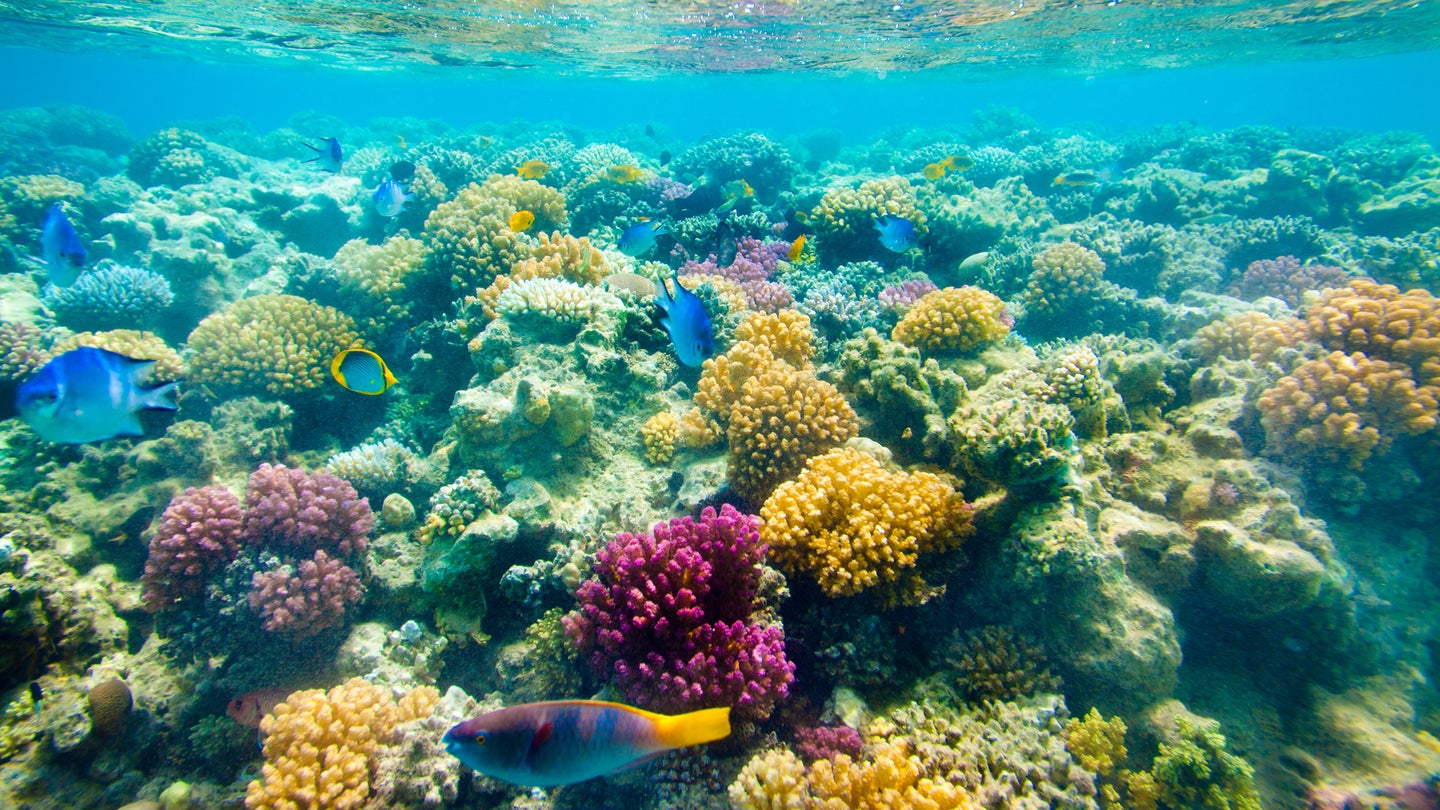
Preserving coral reef ecosystems is absolutely vital to ensuring a stable, healthy ocean environment. Sadly, ongoing climate crises continue wreaking havoc on experts’ efforts to avert the worst effects of die-offs and coral bleaching. With new advancements, however, one potential solution could involve cryopreservation–collecting and containing coral samples at temperatures as low as -321 degrees Fahrenheit.
According to a recent study in Nature Communications, a team at Texas A&M University has developed a novel cryopreservation technique called “isochoric vitrification.” First, fragments of coral are actually strategically bleached in a lab using a combination of menthol and light. Then, coral fragments’ temperatures are quickly lowered to -196 degrees Celsius, or nearly -321 degrees Fahrenheit inside special aluminum containers. But despite the low temperatures, the coral is cooled without immediate injury.
Although any kind of bleaching often removes symbiotic algae crucial to coral photosynthesis, not doing so ahead of isochoric vitrification results in the formation of deadly ice pockets. By removing the algae ahead of vitrification, however, fragments could be preserved in a “glassy state” via submerging the coral in a chemical solution in aluminum containers cooled using liquid nitrogen. Later, the coral could be revived by slowly warming samples with the reintroduction of filtered seawater.
[Related: Mass coral reef bleaching in Florida as ocean temperatures hit 100 degrees.]
“It’s this collaborative marriage of fundamental thermodynamic advancements and fundamental advancements in coral biology and husbandry that have enabled our breakthrough success in whole coral cryopreservation,” Matthew Powell-Palm, the project’s lead author and an assistant professor of mechanical engineering, explains in a statement.
Although the team notes that coral cryopreservation has already been used in the past, the methods require collecting samples during coral reproduction cycles. Such breeding periods only occur a few days a year, often in difficult-to-reach areas. In contrast, isochoric vitrification allows researchers to harvest and preserve coral regardless of time of year. What’s more, the new method is vastly simpler than alternative cryopreservation techniques.
“Compared to other emergent vitrification techniques—which frequently require lasers, electromagnetic implements or other high-tech laboratory equipment—our isochoric vitrification approach… requires no moving parts or electronics, and the protocol can be implemented by a field technician with no background in thermodynamics,” Powell-Palm continues in their statement. “This is essential to the practicality of any conservation technique because when this is deployed in real marine field stations, the high-tech lab infrastructure common to many laboratories will not be available.”
“From a purely technological perspective, the technique is simple, rugged and ready for the field,” Powell-Palm explained via the announcement.
After honing their new technique, researchers tested the isochoric vitrification process on coral fragments at the Hawaii Institute of Marine Biology. Currently, coral samples’ post-thaw lifespans post-thaw only lasted less than 24 hours, but the team believes reducing the procedure’s overall stress effects will extend the method’s viability.
“Coral reefs are essential to the baseline health of our oceans, and cryo-conservation of endangered coral species can help to ensure that these invaluable and marvelous organisms do not go extinct,” wrote Powell-Palm.
The post Scientists are intentionally bleaching and ‘cryopreserving’ coral appeared first on Popular Science.
Articles may contain affiliate links which enable us to share in the revenue of any purchases made.
from | Popular Science https://ift.tt/VphDJBL




0 Comments